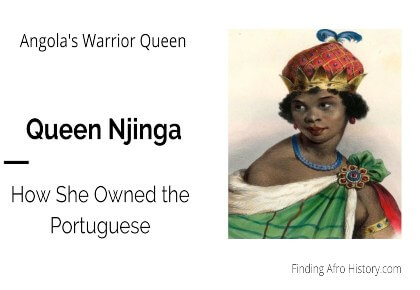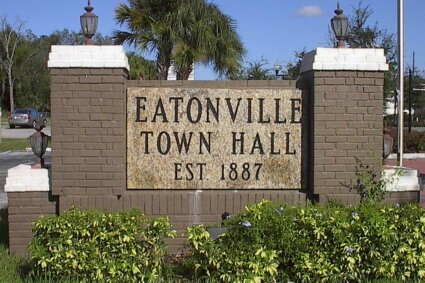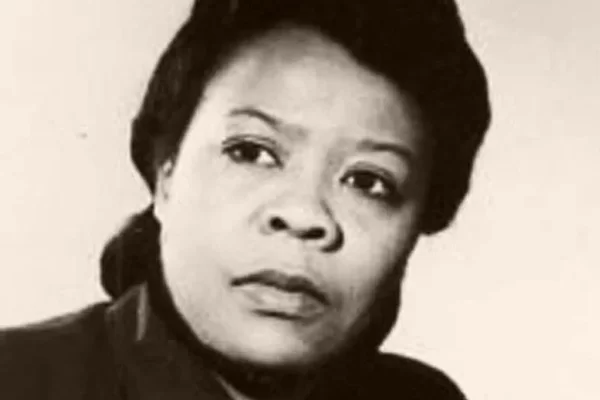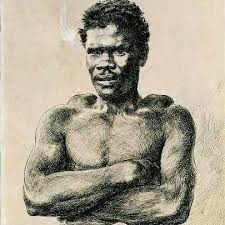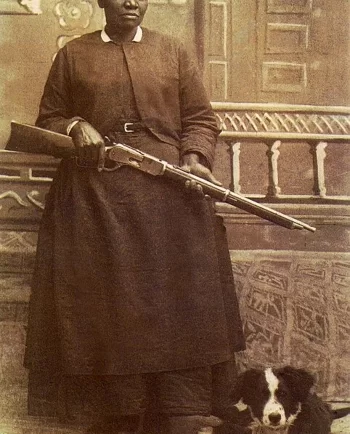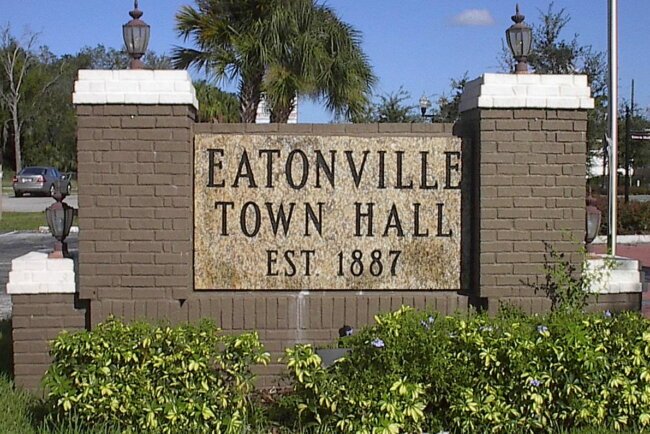Journey Through Recent Stories 🔎
Thomas Fuller: 8 Facts About His Life
Embark on a thrilling journey through eight astonishing facts about Thomas Fuller (1710-1790), the enslaved mathematical genius known as the Virginia Calculator. Discover his mental […]
African American History PeopleEmbark on a thrilling journey through eight astonishing facts about Thomas Fuller (1710-1790), the enslaved mathematical genius known as the Virginia Calculator. Discover his mental triumphs that defied the shackles of slavery.
1. The Virginia Calculator’s Mystifying Beginning
Meet Thomas ‘Negro Tom’ Fuller, a mathematical genius born in 1710. His captivating journey unfolds against the backdrop of enslavement in the United States, earning him the moniker ‘Virginia Calculator.’
2. A Stolen Childhood: Abduction at Age Fourteen
Imagine being torn from your homeland at the tender age of fourteen. Thomas endured this heart-wrenching reality when slave traders snatched him from Africa, setting the stage for a life that would defy expectations.
3. Bound for Virginia: Sold to a Plantation Owner
Thomas found himself in the hands of a Virginia plantation owner after being sold by slavers. Little did he know, the skills cultivated in his African homeland would become the foundation for his extraordinary abilities.
4. Roots of Genius: Arithmetic in West Africa
Before his abduction, Thomas immersed himself in arithmetic under the guidance of African schoolteachers. These skills became his secret weapon, allowing him to tackle complex calculations that astonished those around him.
5. The Virginia Calculator’s Feat: Complex Calculations Unleashed
Thomas Fuller, the Virginia Calculator, effortlessly solved the most complex mathematical calculations within minutes, earning widespread acclaim.
6. Mind Over Paper: Mental Math Marvel
Reach deep within yourself and step into Thomas’ extraordinary mind. He performed intricate calculations without the aid of pen and paper. What if you could do the same? What if you could mentally solve within minutes or seconds calculations unknown to even the greatest of minds? Like Thomas, you, too, would defy the conventions of time.
7. Challenge Accepted: Thomas Stuns Critics
Picture the scene as two white men from Pennsylvania challenge Thomas with seemingly impossible questions. Without hesitation, Thomas astounded them by mentally unraveling numbers at record speed.
8. Triumph of the Mind: Thomas Fuller’s Defining Moment
In a showdown against white rivals, Mr. Thomas Fuller faced a daunting challenge. The men from Pennsylvania told him to calculate – How many seconds old is a man who is 70 years, 17 days, and 12 hours? In a minute and a half, Thomas answered 2,210,500,800.
The men smirked at what they saw to be the incorrect response, but not too quickly, LOL:) Because Thomas considered leap years, his response was accurate, and observers applauded his accomplishment!
Thomas Fuller is a true marvel who turned adversity into an extraordinary legacy. 💥
http://www.math.buffalo.edu/mad/special/fuller_thomas_1710-1790.html
Stagecoach Mary – Nuns, Guns, and a Barrel of Excitement!
Step into the wildlife of Stagecoach Mary Fields as she battles wolves, scoffs at prejudice, and delivers mail in a style that’s part gunslinger. Get […]
People African American HistoryStep into the wildlife of Stagecoach Mary Fields as she battles wolves, scoffs at prejudice, and delivers mail in a style that’s part gunslinger. Get ready for a ride!
Defending the Mail: A Night to Remember
Under the moonlit Montana sky, Stagecoach Mary prepared to face a pack of trouble-causing wolves. Her only defense, a jug of whiskey and a trusty shotgun.
As Mary nibbled on small game animals like rabbits and squirrels for dinner, little did she know that the scent of her meal might have lured these creatures closer. Or perhaps the wolves saw Mary as an unwelcome guest intruding on their turf, triggering a full-on display of territorial aggression. The growls, the bared teeth, the haunting howls echoing through the night–with anxious feelings all around.
Mary, surrounded by a pack of wolves in the distance, feeling the chill of the night air, the tension rising with every howl. The encircling shadows danced around her campsite like threatening ghosts, casting a frightening spell. It must’ve been a night where fear was an unwelcome companion.
Late-night face-off with the Alpha
Yet, here’s where the story takes a turn. Mary, no stranger to adversity, didn’t cower in fear. Instead, at 6 feet tall and 200 lbs she stood her ground like a true pioneer, ready to face the alpha wolf head-on. The showdown between Mary and the alpha was like a high-noon duel, a battle of wills under the watchful eyes of the moon.
In that heart-pounding moment, the alpha wolf, use to being the boss of its territory, finally ran into someone who wasn’t about to roll over for a belly rub. It had met its match. Mary Fields, the fearless defender, stared down the aggressor, showing that even wolf howls couldn’t drown out her no-nonsense spirit. The howls may have continued, but Mary’s determination drowned out the fear.
Her dedication to herself and delivering the mail went beyond the call of duty. Beneath that night sky, Mary showcased toughness and a commitment that even a pack of territorial wolves couldn’t break. The wolves may have circled, but Mary stood tall, proving that bravery is not just for the pages of adventure stories but for real-life legends like Stagecoach Mary.
Mary’s Early Years
Born into slavery around 1832 or 1833 in Tennessee, Mary Fields embraced her freedom after the 13th Amendment in 1865. Standing at 6 feet and weighing just under 200 pounds, she was a fearless, gun-toting black woman of the Wild West. Not easily intimidated, she enjoyed visiting saloons, drinking, smoking with the fellas, and men’s clothing for a more comfortable fit.
Bold Moves and Nuns
In her 50s, Mary made a bold move to Toledo, Ohio. Once there, she moved into Ursuline Convent of Sacred Heart – a Christian community where nuns lived. One of her responsibilities included nursing back-to-health nuns who became ill.
Later, Mary traveled to St. Peter’s Mission, an all-girls school in Montana. Stronger than most men, she was put in charge of supervising and directing the other workers. It was there that she contributed to the construction of three stone buildings and a church.
While at the Mission school in Montana, Mary was like a tornado with a cowboy hat. Mary nearly blasted a man to death and pelted another with rocks for disrespecting her.
During one incident, a stubborn white fellow refused to take orders from Mary because of her skin color. He tossed around the ‘n-word’ like he was auditioning for a really bad Western movie.
Well, Mary wasn’t about to let that slide. She whipped out her trusty pistol and fired a shot that probably had folks wondering if they were in a shootout or a schoolyard spat.
When the Catholic Bishops got wind of Mary’s “showdowns,” they had to ring the dismissal bell. Her closest friends, the nuns, wanted her to stay, but the Bishop had the final say. Turns out, even in the holy world of missions, Mary’s wild antics were a bit too spicy for the faith.
Guess they didn’t get the memo that Mary Fields was the sassiest sister in the West, trading rosaries for revolvers and prayers for pistol poppin’. Who says being a nun can’t be a wild ride? Stagecoach Mary, the original gangster.
The Legendary Stagecoach Mary
A remarkable turn came in 1895. In her early sixties, Mary became a Star Route Carrier for the United States Post Office in Montana. Earning the nickname ‘Stagecoach Mary’, she braved weather, wolves, and bandits while carrying mail for eight years, on a 34 mile route. Ms. Fields was the second woman, but the first African American woman to receive a Star Route contract from the United States Post Office Department.

Beyond the Stagecoach: Entrepreneurial Spirit
With the help of her friend, Mother Amadeus, Mary owned and operated a restaurant in nearby Cascade, Montana. However, success at the eatery was limited, and Mary switched to the laundry business, where she found greater success. While spreading laughter and suds, Ms. Fields had to teach a lesson (literally!) to a guy dodging laundry bills. She walked up behind him and whacked him over the head for her money—a hilarious and impactful twist in her entrepreneurial tale!🎯

Legacy and Final Rest
Stagecoach Mary, born Mary Fields, also referred to as ‘Black Mary,’ left an indelible legacy. The townspeople of Cascade had come to love and respect her. She passed away in 1914, she was 82. The community laid her to rest below the mountain trail leading to St. Peter’s Mission.
Her powerful spirit, never-give-up attitude, bravery, and trailblazing achievements made her remarkable. From enslavement to her early years as a freedwoman to her pioneering role in the Wild West, Mary Fields proved that no challenge could hinder her path.✊🏾
***********************************
Discover Robert ‘Bob’ Lemmons Our Next Hero of the Wild West
Vintage images credit: https://www.vintag.es/2020/08/mary-fields.html
Eatonville Florida – Vibrant Black Heritage
Step into history with Eatonville, Florida, the USA’s oldest Black town, pioneering self-governance by freed individuals. Nestled just six miles north of bustling Orlando, this […]
African American History PlacesStep into history with Eatonville, Florida, the USA’s oldest Black town, pioneering self-governance by freed individuals. Nestled just six miles north of bustling Orlando, this quaint municipality in Orange County stands as a beacon of resilience and progress.
While not the initial Negro settlement in American annals, Eatonville boasts a unique milestone: incorporation. In a historic move on August 18, 1887, twenty-seven ex-slaves united in a resounding vote, marking the birth of Eatonville as the nation’s first self-governed black community.
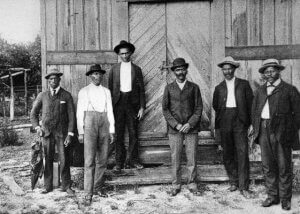
Forging Freedom: The Dream of Self-Governance
As the dust settled after the Civil War (1861-1865), former slaves wanted to be free and independent. But white landowners wouldn’t let them buy land. Despite this, Black people from Maitland, Florida, and other places forged a united front. They were determined to create their own safe and self-governing community. They dreamed of a lively place where Black people could be in charge, without being controlled by white people.
Settlement of Freedom: The Birth of Eatonville, Florida
In 1882, two white landholders, Josiah Eaton and Lewis Lawrence, agreed to sell large tracts of land to a group of black trustees from a local church. To help with the development of the settlement, Eaton sold Lawrence 10 acres.
Lawrence, a philanthropist from New York, donated an additional 12 acres to the African Methodist Episcopal Church on November 18,1885.
Elected as the town’s first mayor. Joseph E. Clark–an ex-slave from Georgia, played a prominent role in the development of the new town.
On the day of incorporation in 1887, the townsfolk had gained an additional 90 acres of territory. With 112 acres, the freedmen were ready to build new lives. The town’s population at the time was 27 residents.
The founders named their new Negro settlement after Josiah Eaton, and St. Lawrence AME church is named in Lawrence’s honor.
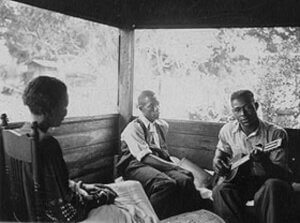
Zora Neale Hurston: Eatonville’s Literary Legacy
Eatonville’s most famous former resident is folklorist, anthropologist, and author, Zora Neale Hurston. She is best known for her novel, “Their Eyes Were Watching God.”
Zora was an infant when her family moved to the town in 1892. Her father served three terms as mayor of Eatonville.
In 1989, the expansion of a main road leading through Eatonville provoked controversy. To raise funds to fight against the proposed road project, Eatonville residents started the Association to Preserve Eatonville.
In 1990, the association launched the first Zora! Neale Hurston Festival. As of 2023, the festival is set to celebrate its 34th season.
Zora! Fest is a celebration of arts, history, and culture. The festival draws over one hundred thousand visitors to the small town.
Eatonville Florida’s Historic District
The Eatonville Historic District, designated and added to the National Register of Historic Places on February 3, 1998, encompasses 48 historic buildings, some dating back to the town’s inception. Among these structures are homes, churches, and community landmarks, each telling a story of Eatonville’s rich heritage.
Read More Stories:
Discover how Bob Lemmons: The Dynamic African American Cowboy was leaving his own mark in history during Eatonville’s development.


